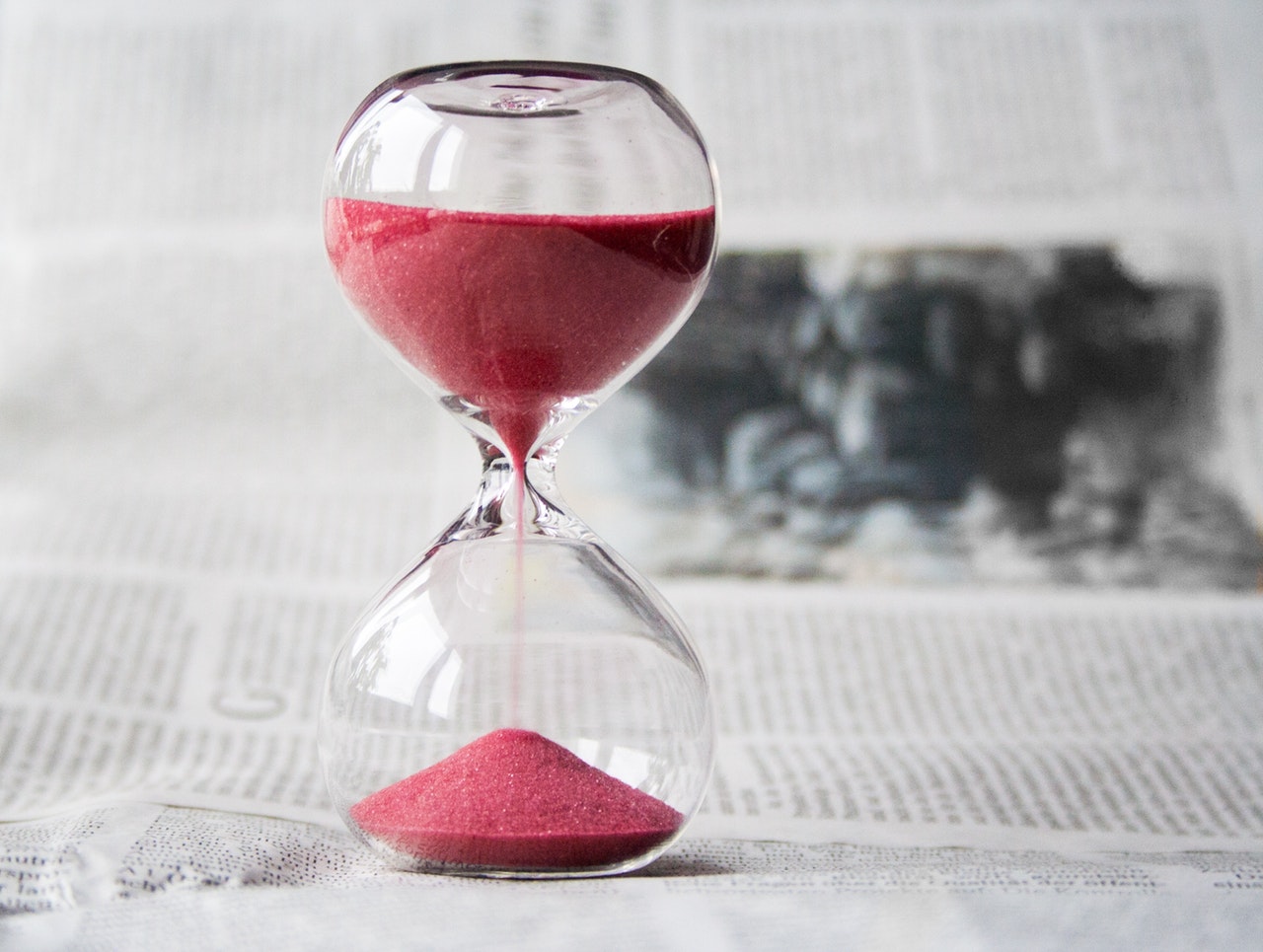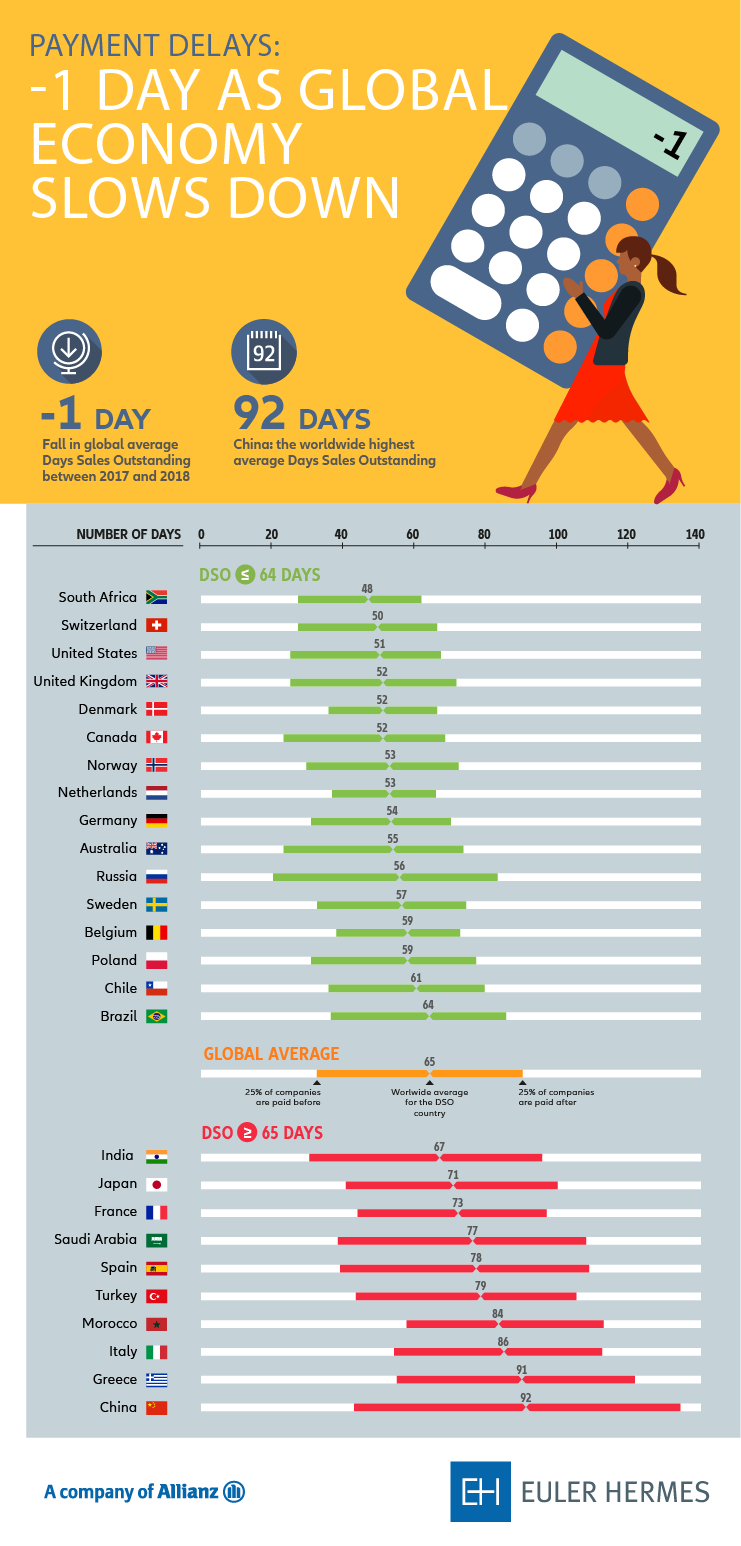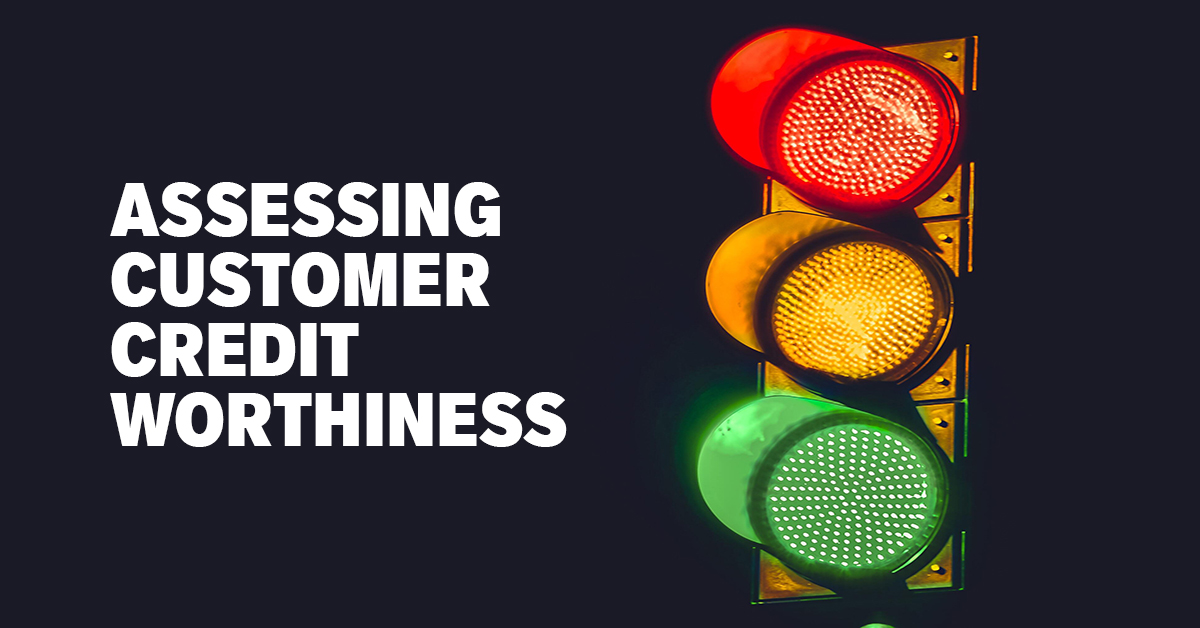Customers are taking more time to pay invoices. How is global DSO impacting your business?
In line with the economic slowdown, companies preemptively reduced payment delays in 2018, except for Mediterranean countries.
Euler Hermes issued its annual review and forecast of global average Days Sales Outstanding (DSO), based on a sample of 25,000 listed companies across 20 sectors and 36 countries. Days Sales Outstanding (DSO) is a measure of how long it takes companies to collect cash from customers.
Euler Hermes’ study shows that after hitting a 10-year high in 2017, global average DSO fell by -1 day to 65 days in 2018, a sign of companies becoming more cautious in line with the global economic slowdown. As world GDP growth slows further this year, Euler Hermes expects DSO to reach 64 days in 2019.
Learn how long your client may take to pay you in the inforgraphic below.



















